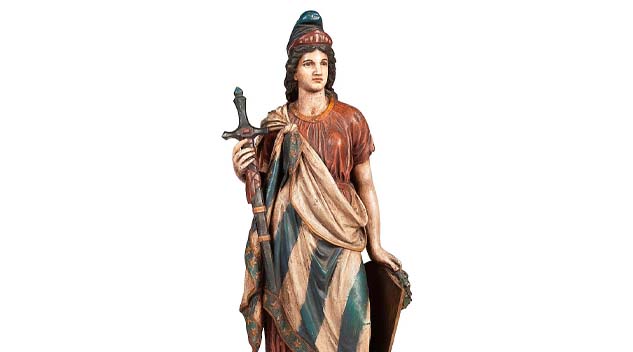#Moylan #Collection #Hindman #Antiques #Arts #Weekly

This painted cast zinc Goddess of Liberty figure, made by William DeMuth and Co in the late Nineteenth Century, was not restrained by its $15/20,000 estimate and sold to an international buyer, bidding online, for $53,550. It was the highest price of the day.
Review by Madelia Hickman Ring; Photos Courtesy Hindman
CINCINNATI, OHIO — Part 1 of the American furniture, folk and decorative arts collection of Donald F. Moylan, MD, were offered at Hindman on Friday, November 3, in a 339-lot sale that attracted nearly 1,000 bidders across three bidding platforms and took seven hours to gavel down. By the end of the day, nearly $660,000 had been amassed with a 92 percent sell-through rate.
Achieving the apex of the sale with a $53,550 result was a 59-inch-tall polychrome painted cast zinc Goddess of Liberty figure that had been made in the last quarter of the Nineteenth Century by William DeMuth and Co of New York City. Its old paint and the traces of the original surface it retained were among its desirable elements; Benjamin Fisher, Hindman’s vice president and senior specialist in Americana, said there had been lots of interest in it before the sale and four phone bidders competed for it against online competition. An international buyer, bidding online, prevailed over everyone else to win it.
Painted furniture was a strength of Moylan’s collection and the category saw several lots among the top tier results. A blue sponge-paint-decorated pine and poplar five-drawer blanket chest that Fisher said “a lot of people loved” appeared to retain its original paint and finish; it had previously crossed the block at Cowan’s Auctions in 2015. It also had provenance to Adam’s Rib in Lebanon, Ohio, and the Cincinnati collection of John Chewning. It found a new home in a Midwest private collector for $31,500.
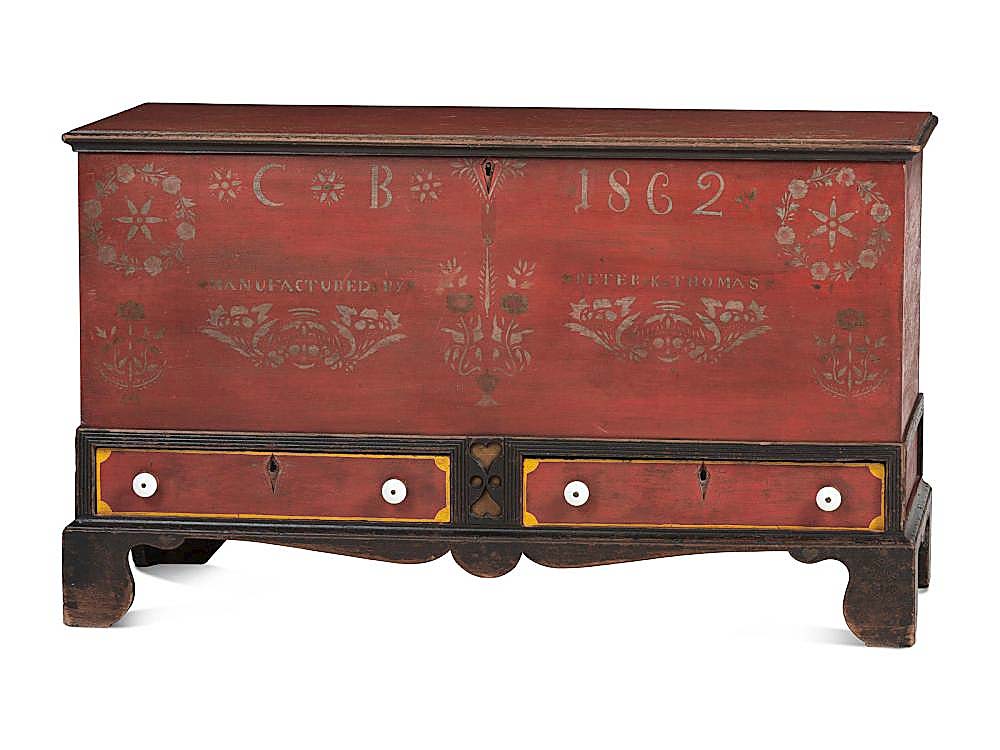
Though this Soap Hollow stencil-decorated and heart-carved poplar two-drawer blanket chest was not fresh to the market, original surface and other elements and publication history in a critical reference text helped drive interest. A Mid-Atlantic bidder took it for $17,640 ($8/12,000).
Another piece that had appeared on the market in recent years was a Soap Hollow stencil decorated and heart-carved poplar two-drawer blanket chest that was made by Peter K. Thomas. Its appearance in the critical reference book on the subject, Charles R. Muller’s Soap Hollow: The Furniture and Its Makers (Groveport, Ohio, 2002), combined with the desirable features of its original till, lock mechanisms and hinges to drive interest. Previously offered in a Texas auction when it sold for about $16,000, in Hindman’s sale, it achieved $17,640 from a Mid-Atlantic buyer.
Dean A. Fales, Jr’s American Painted Furniture, 1660-1880 (New York: E.P. Dutton & Co, 1972) is another essential reference on the subject and resource for painted furniture collectors; inclusion in it undoubtedly helped contribute to interest in a country Federal paint-decorated pine and cherry wood tavern table, attributed to Massachusetts, circa 1820. A buyer in New England ran it up to $10,710, nearly ten times its high estimate.
The same price of $10,710 was achieved by a painted cherry wood blanket chest that was purportedly made by an African American cabinetmaker and found in Lexington, Ky. Though never set with hinges, the piece retained its original top and featured design motifs similar to African American quilts and coverlets. It sold to a trade buyer.
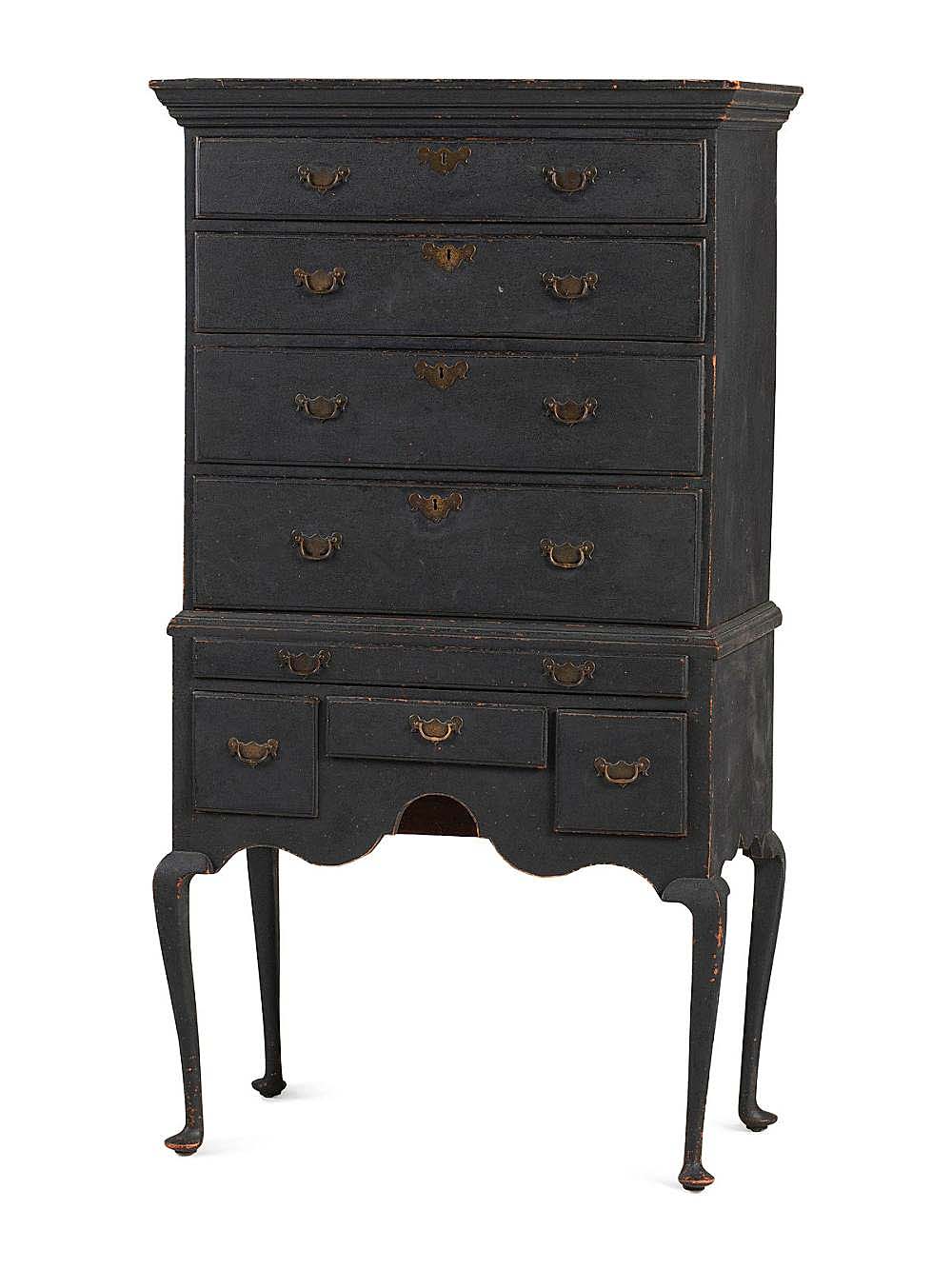
“It was one of my favorite things and had a great crusty surface,” Ben Fisher said of this Queen Anne maple flat top high chest of drawers that featured diminutive proportions in a 67-inch height and 36½-inch width. A Midwest private collector may have liked it just as much, paying $16,380 for it ($3/5,000).
Fisher’s favorite piece in the sale was a mid-Eighteenth Century Queen Anne maple flat top high chest from New Hampshire that appeared to retain its original black paint and drawer pulls. It brought $16,380 and will be staying in the Midwest, going to a new home with a collector.
Folk portraits were another strong category, with numerous options for collectors and trade buyers to contend for. Two portraits attributed to Frederick Mayhew (American, 1785-1854) that were each estimated at $1/1,500 and offered consecutively were both executed on panels of similar size and depicted seated men. Selling to different buyers — both private collectors — the one that depicted a military officer brought $23,940, while the second earned $6,930.
Portraits of children by William Matthew Prior (American, 1806-1873) have been perennial staples in folk art collections and an example of a girl in a blue dress holding flowers brought $11,970, just below its high estimate. The unsigned oil on paperboard composition had been in a private collection in Rochester, N.Y., and sold at Cottone Auctions in 2017 for nearly $40,000. Fisher noted it had been cleaned since the 2017 auction and was now much more vibrant.
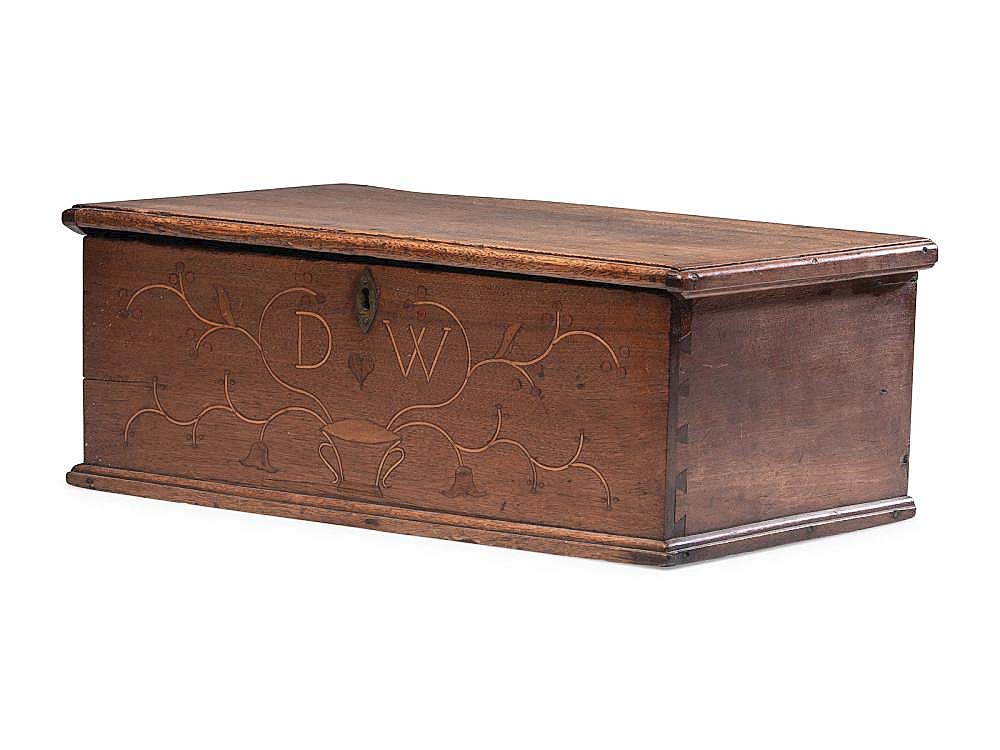
This William and Mary vine and berry inlaid document box was initialed “DW” and came from Chester County, Penn., where it had been made circa 1720. Measuring 7 by 19 by 11 inches, it apparently never had feet and its snipe hinges had been replaced with butt hinges. A private collector in the Midwest booked it out at $15,120 ($5/7,000).
Several boxes in the sale did quite well. A William and Mary vine and berry inlaid walnut document box from Chester County, Penn., and dated to circa 1720 more than doubled its expectations to sell to a Midwest private collector for $15,120. Though it had replaced hinges, it related to two examples that had been offered by Sotheby’s New York in January 2022, when it sold the William K. DuPont collection.
A sulphur inlaid and penwork walnut cash box, probably from Lancaster, Penn., that was profusely ornamented with all manner of Scottish Rite Masonic emblems as well as the motto “Faith Hope & Charity” relates to another box, dated 1861 and possibly by the same hand, at the National Heritage Museum (Scottish Rite Masonic Museum and Library) in Lexington, Mass. A private collector prevailed, taking it to $9,450.
A box that met Fisher’s criteria of “find me another” was a carved and painted valuables example with Masonic interest that just surpassed its high estimate with a $10,080 bid. Made circa 1909 by Arthur Joseph Pennock (Canadian, 1862-after 1948) in Jamestown, N.Y., the lid was whimsically carved with a turtle, it had frog handles on its base and also featured an owl, centipedes, birds of paradise, a monkey and a parrot. Its interior trinket box was incised not only by the maker but also with the all-seeing eye, the flaming urn and a Masonic cipher reading, “Thou Shalt Not Steal” to the hinged lid.
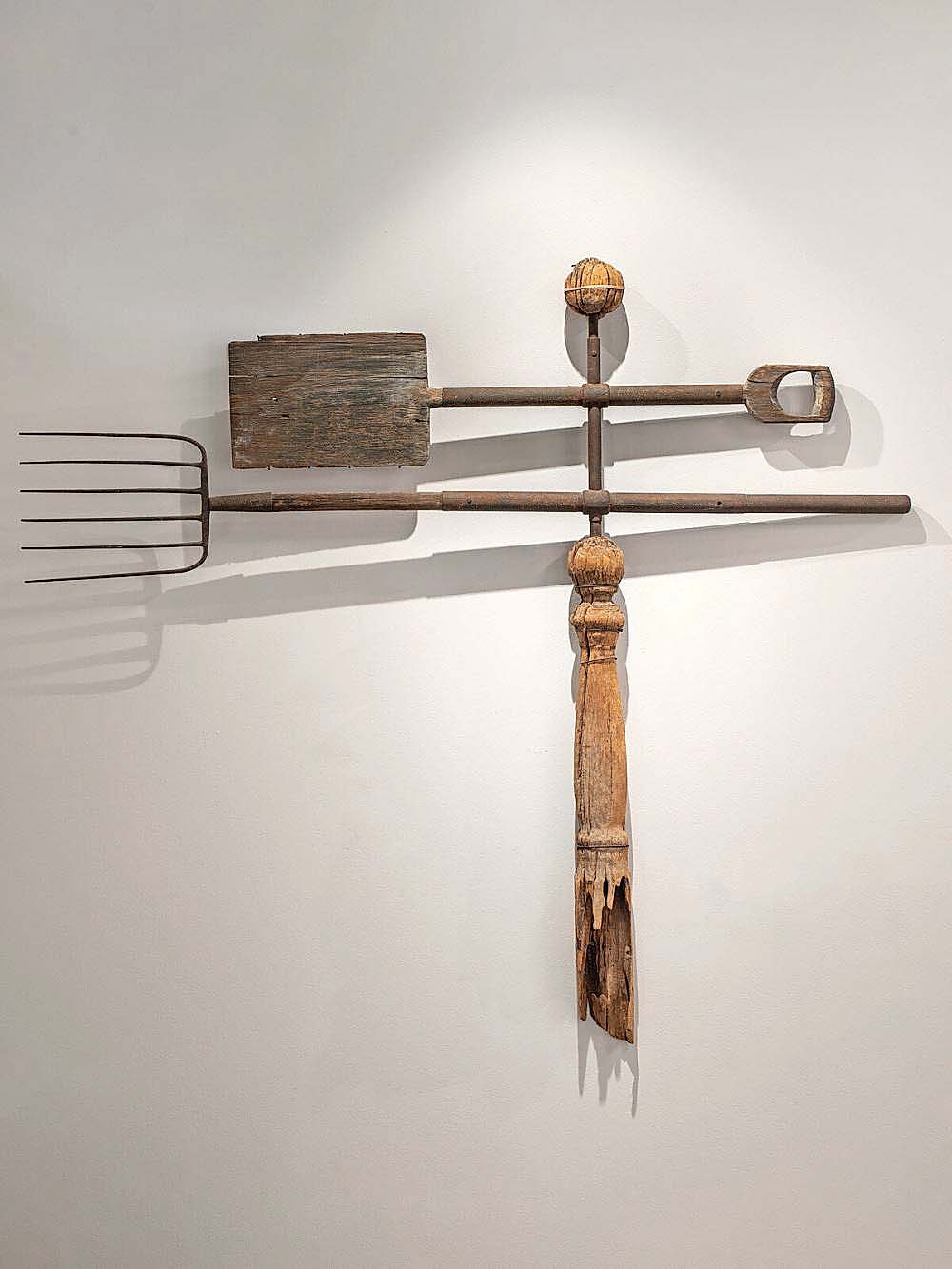
“What a great thing and, again, find me another example” was Ben Fisher’s enthusiastic report of this vernacular weathervane that had been fashioned in the Nineteenth Century in the Midwest from a wrought apple shovel and pitchfork and attached to a newel post. Its provenance included Doug Wyant Antiques, Walters-Benisek Antiques and the collection of David Good. A trade buyer acquired it for $10,080 ($6/8,000).
The quality of the detail carving and condition of this painted wood marching band cymbal player whirligig also qualified it for Fisher’s “fine me another” category. Cataloged as in the manner of Rocco Pavese (Italian/American, 1852-1950) from western Michigan, Nineteenth Century, the figure had an overall height of 33½ inches and sold to a trade buyer for $12,600, more than 10 times its high estimate.
Fisher said Part 2 of the Moylan Collection would take place in March, date to be announced.
Prices quoted include the buyer’s premium as reported by the auction house. For more information, 312-280-1212 or www.hindmanauctions.com.

